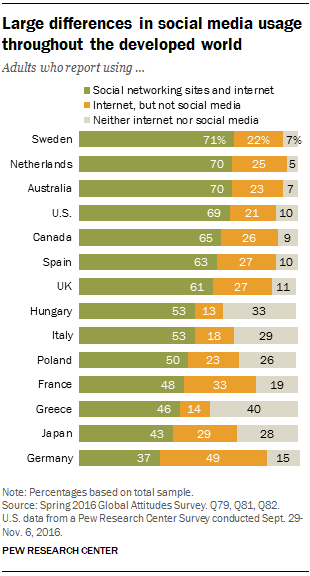Megan Rose Dickey at TechCrunch: “When Netflix recommends you watch “Grace and Frankie” after you’ve finished “Love,” an algorithm decided that would be the next logical thing for you to watch. And when Google shows you one search result ahead of another, an algorithm made a decision that one page was more important than the other. Oh, and when a photo app decides you’d look better with lighter skin, a seriously biased algorithm that a real person developed made that call.
Algorithms are sets of rules that computers follow in order to solve problems and make decisions about a particular course of action. Whether it’s the type of information we receive, the information people see about us, the jobs we get hired to do, the credit cards we get approved for, and, down the road, the driverless cars that either see us or don’t see us, algorithms are increasingly becoming a big part of our lives.
But there is an inherent problem with algorithms that begins at the most base level and persists throughout its adaption: human bias that is baked into these machine-based decision-makers.
You may remember that time when Uber’s self-driving car ran a red light in San Francisco, or when Google’s photo app labeled images of black people as gorillas. The Massachusetts Registry of Motor Vehicles’ facial-recognition algorithm mistakenly tagged someone as a criminal and revoked their driver’s license. And Microsoft’s bot Tay went rogue and decided to become a white supremacist. Those were algorithms at their worst. They have also recently been thrust into the spotlight with the troubles around fake news stories surfacing in Google search results and on Facebook.
But algorithms going rogue have much greater implications; they can result in life-altering consequences for unsuspecting people. Think about how scary it could be with algorithmically biased self-driving cars, drones and other sorts of automated vehicles. Consider robots that are algorithmically biased against black people or don’t properly recognize people who are not cisgender white people, and then make a decision on the basis that the person is not human.
Another important element to consider is the role algorithm’s play in determining what we see in the world, as well as how people see us. Think driverless cars “driven” by algorithms mowing down black people because they don’t recognize black people as human. Or algorithmic software that predicts future criminals, which just so happens to be biased against black people.
A variety of issues can arise as a result of bad or erroneous data, good but biased data because there’s not enough of it, or an inflexible model that can’t account for different scenarios.
The dilemma is figuring out what to do about these problematic algorithmic outcomes. Many researchers and academics are actively exploring how to increase algorithmic accountability. What would it mean if tech companies provided their code in order to make these algorithmic decisions more transparent? Furthermore, what would happen if some type of government board would be in charge of reviewing them?…(More)”.

